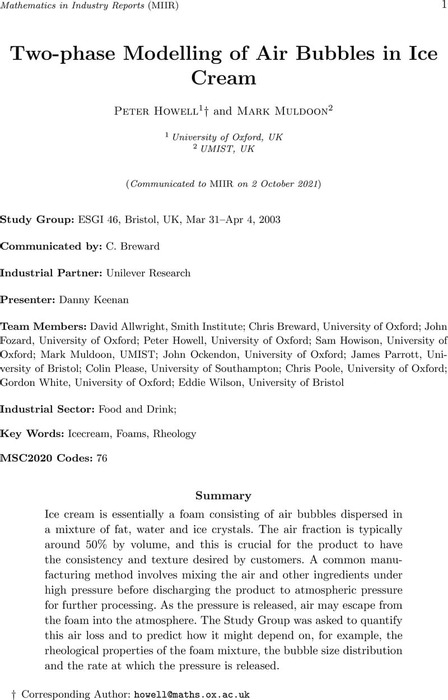Abstract
Ice cream is essentially a foam consisting of air bubbles dispersed in a mixture of fat, water and ice crystals. The air fraction is typically around 50% by volume, and this is crucial for the product to have the consistency and texture desired by customers. A common manufacturing method involves mixing the air and other ingredients under high pressure before discharging the product to atmospheric pressure for further processing. As the pressure is released, air may escape from the foam into the atmosphere. The Study Group was asked to quantify this air loss and to predict how it might depend on, for example, the rheological properties of the foam mixture, the bubble size distribution and the rate at which the pressure is released.
Content




